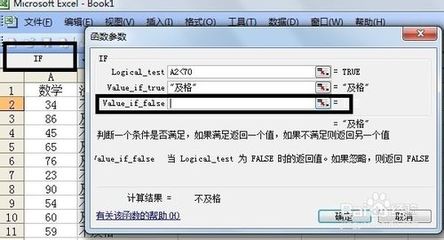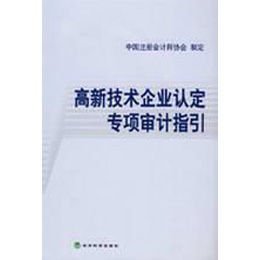1.过去分词是动词的另一种非限定形式,过去分词具有动词、形容词和副词的特性,可以带宾语或受状语修饰。过去分词和宾语或状语一起构成过去分词短语。如:
(1)spoken English 英语口语(过去分词具有形容词的特性,作定语)
(2)Given more time, we could do it much better.
=If we were given more time, we could do it much better.
多给点时间,我们会做得更好些。
(过去分词具有动词的特性,有自己的宾语more time,构成分词短语;过去分词短语在句中作状语,具有副词的特性。)
2.过去分词的基本形式
(1)规则动词的过去分词由动词+ed构成
(2)不规则动词的过去分词须逐个记忆。
(3)不规则动词的过去分词表示完成,如:
fallen leaves =leaves which have fallen 落叶
(4)及物动词的过去分词表示被动或完成,如:
the machines used in the workshop
=the machines which are used in the workshop
车间用的机器(及物动词的过去分词表示被动)
I heard the door opened.
=I heard the door has been opened.
我听见门被打开了。(及物动词的过去分词表示被动和完成)
二、过去分词的句法功能

过去分词是一种非谓语动词,在句中不能单独做谓语。但它具有形容词和副词的特性,故在句中可以作定语、表语、宾语补足语和状语。
(一)定语
作定语用的过去分词如果是单个的词,就放在被修饰的词的前面;若为分词短语则放在所修饰的词的后面。如:
The excited children are opening their Christmas presents.
兴奋的孩子们正在打开他们的圣诞礼物。
Some of the people invited (=who have been invited) to the party can’t come.
有些被邀请参加晚会的人不能来。
注意:(1)做定语用的过去分词通常指已完成的动作,若要表示现在进行的动作则要用过去分词的进行形式。
We must keep a secret of the things being discussed here.
=We must keep a secret of the things which are being discussed here.
我们必须对这里讨论的问题保密。
(2)如指未来的情况,都用不定式的被动形式。
He prepared some poems to be recited at the English evening.
他准备了几首将在英语晚会上朗诵的诗。
例1.The computer centre, ______ last year, is very popular among the students in this school.
A.open B.opening
C.having opened D.opened
答案与简析:选D。过去分词短语作后置定语,相当于非限制性定语从句which was opened.
(二)表语
Be prepared! 做好准备!
Everybody got excited about the boat trip.
大家对坐船游览倍感兴奋。
注意:“be+过去分词”与被动语态的区别:
“be+过去分词”表示状态;被动语态表示一个动作。如:
The bank is closed now.
银行现在已经关门了。(表状态)
He had been injured during the war.
他是在战争中受伤的。(表动作)
(三)宾(主)语补足语
What made you so frightened?
什么使你这样惊恐?
He was found injured at the foot of a cliff.
他被发现在山岩脚下受了伤。
例2.The managers discussed the plan that they would like to see ______ the next year.
A.carry out B.carrying out
C.carried out D.to carry out
答案与简析:选C。过去分词短语在定语从句中作宾补。
(四)做状语
1.Born into a peasant family (=As he was born into a peasant family), he had only two years of schooling.(由于)他出生于农民家庭,他只上了两年学。
2.United we stand, divided we fall.
=(If we are) United we stand and (If we are divided) we fall.
团结则存,分裂则亡。
3.We went home exhausted.
我们筋疲力尽地回到了家里。
4.分词有时和连词一起用,相当于状语从句的省略。
Robbie had arranged for this man to come whenever (he was) needed.
罗比已安排好,随时需要这人就可以来。
例3.The child complained that the old man made no answer when _____ where he lived.
A.asking B.asked
C.to ask D.having asked
答案与简析:选B。状语从句的省略when (he was) asked.
三、现在分词与过去分词的区别
现在分词与过去分词都能作表语、定语、状语和补语。
现在分词表示主动、进行;过去分词表示被动、完成。
1.作表语:现在分词表示主语的性质,过去分词表示主语的状态。
(1)The film is very moving.
这部电影很感人。(表性质,主语本身怎样)
(2)My hair is sold and gone.
我的头发卖了,不见了。(表示状态“不复存在”)
例4.Mrs. Bush stood _______ for a moment when an old soldier suddenly appeared before her.
A.surprised B.surprising
C.being surprised D.to be surprise
答案与简析:选A。stood为半系动词,surprised意为“吃惊的”,表示stood的状态。
2.作定语
分词作定语,其逻辑主语是被修饰的词。逻辑主语与分词是主动关系时,就用现在分词;是被动关系时,就用过去分词。
(1)The books dealing with the Long March are sold out.
=The books which deal with the Long March are sold out.
有关长征的书售完了。
(2)The books written by Guo Jinming are popular with young people.
=The books which were written by Guo Jinming…
郭敬民写的书很受年青人的欢迎。
例5.No computer so far ______ can have the same ability as human rights.
A.be built B.having built
C.being built D.built
答案与简析:选D。build与no computer之间存在被动关系。
3.作状语
分词作状语,其逻辑主语是句子的主语。逻辑主语与分词是主动关系时用现在分词,是被动关系时,用过去分词。如:
Seeing from the top of the hill, we saw a beautiful school.
Seen from the top of the hill, the school is beautiful.
从山顶上看,这所学校很漂亮。
例6.______ in thought, he almost ran into the car in front of him.
A.Losing B.Having lost
C.Lost D.To lose
答案与简析:选C。“陷入沉思”用be lost in thought.
4.作宾补
分词作宾补,其逻辑主语是宾语。宾语(逻辑主语)与分词是主动关系时,用现在分词,是被动关系时,用过去分词。例:
I saw the boy playing in the garden.
I saw the plan carried out.
四、常接过去分词作宾补的动词
(一)使役动词
1.keep, leave, get, make的宾语后面的宾语跟过去分词作补语,表示使宾语处于某种状态。如:
(1)He raised his voice in order to make himself heard by the audience.
他提高了声音,为了能让观众听到。
(2)We mustn’t leave the work unfinished.
我们不能让工作半途而废。
2.have+宾语+过去分词(宾补)有三种情形:
(1)I had my hair cut yesterday.
昨天我理发了。(have sth. done =ask sb. else to do)
(2)I had my wallet stolen yesterday.
昨天我钱包被偷了。(have sth. done 遭受……)
(3)I have my homework finished.
我已经完成了家庭作业。(完成式的强调)
例7.TV has so many advantages. It keeps us ______ about the ______ news, and also provides entertainment in the home.
A.informed; latest B.informed; later
C.informing; later D.informing; latest
答案与简析:选A。inform与宾语us之间存在被动关系,故用过去分词作宾补。
(二)感观动词
表示感觉和心理状态的词,如see, hear, feel, watch, notice, observe, find, look at, listen to 这些动词所带的宾语后可以接过去分词作宾语补足语。如:
I saw a girl knocked down by a truck.
我看见一个女孩被一辆卡车撞倒。
When I came in, I found the glass broken.
当我进来的时候,我发现玻璃被打碎了。
例8.Yesterday I saw a man _____ in the street with a little boy ____ on his shoulder.
A.walking; seating B.walk; sat
C.walking; seated D.to walk; sitting
答案与简析:
选C。第一空宾语a man为动作发出者故用walking;第二空seat为“使……坐下”,故用过去分词seated“坐下”,或sitting,综合两空选C。
(三)其它的动词
wish, want, like, expect+宾语+过去分词(宾补)
We wished the problem settled at once!
我们希望问题马上解决。
五、独立主格结构
(一)独立主格结构的构成
1.名词或代词+分词/不定式/形容词/副词/介词短语构成。
2.独立主格结构没有主语和谓语,所以在语法上不是句子。
3.独立主格结构在句中起方式、时间、条件等状语或状语从句的作用。
4.独立主格结构前可用with变成with+名词/代词+分词/形容词/副词/介词短语的复合结构,在句中也可作定语。
(二)(with)名词/代词+分词(doing或done)结构
这种结构的功能相似于分词或分词短语作状语,分词的逻辑主语是句子的主语,而独立结构中doing(done)的逻辑主语是它前面的名词或代词。若名词/代词是动作的发出者,则用doing;若为动作承受者,则用done.如:
1.Miss Gao falling ill, Mr. Wang took her class instead.
=Because Miss Gao fell ill, Mr. Wang took her class instead.
2.All things considered, her paper is of greater value than yours.
=If all things are considered, her paper is of greater value than yours.
3.He lay in bed with his head covered.(方式状语)
他躺在床上,盖着头。
4.He lay on his back, his teeth set, his right hand clenched on his breast and his glaring eyes looking straight upward.
他仰卧着,他的牙齿紧咬,他的右手紧握在胸前,他的眼睛直盯着上面。
六、表示人的心理感受的动词的现在分词与过去分词
(一)表示人的心理感受的动词,如:please, delight, satisfy, inspire, encourage, excite, interest, move, frighten, surprise, astonish, puzzle, disappoint, discourage, tire等词,其动词含义为“让人……”
(二)这些词的-ing和-ed均可视为形容词。
1.-ing“让人……的”一般修饰物;-ed“……的”一般说明人。
例:We are interested in these interesting books.
2.当修饰人的表情、眼神、眼泪、声音时要用-ed形式。
例.Her frightened face showed us what had happened to her family.
 爱华网
爱华网
